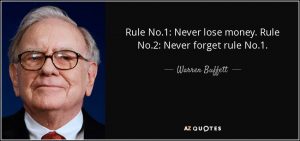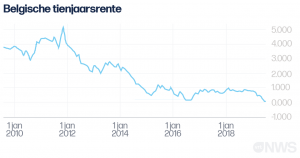In the past years I have written several blog posts about the savings account behavior of the majority of Belgian people. Below blog posts date from january and april 2017.

 Read about collective (stupid) behavior of the Belgian population
Read about collective (stupid) behavior of the Belgian population
Saving Belgian has no appetite for risk …Our reflection
Has anything changed since that time ? What is the current economic outlook impacting your savings account ? Do you understand the impact of economics and interest rates on your savings account ?
1. The BIG Picture
2. Why you will get 0% (soon) on your savings account
 The Belgian savings account is legally set to a minimum of 0,11%. So that means that banks lose money on every euro you save on your savings account. So what’s starting to happen ?
The Belgian savings account is legally set to a minimum of 0,11%. So that means that banks lose money on every euro you save on your savings account. So what’s starting to happen ?
The CEO of the bank ING, Erik Van Den Eynden, pledges for ZERO % on your savings account. Several banks have started to lobby with the government to lower this 0,11% interest rate for your savings account.
The overarching lobby organization Febelfin understands the statement and says that profit margins of banks have become too small.
3. Final Words
 Never was the interest rate on your savings account so low and what does the average Belgian person do ? He added more and more to his savings account. Now in total 278,4 billion euro !! So Belgians are losing 4 billion BUYING POWER as a result.
Never was the interest rate on your savings account so low and what does the average Belgian person do ? He added more and more to his savings account. Now in total 278,4 billion euro !! So Belgians are losing 4 billion BUYING POWER as a result.
If you only “invest” or save money in your savings account, you will only lose money. In september ECB will lower the rates even more. My opinion is that it will REMAIN SO LOW or even become NEGATIVE WITHIN THE NEXT 5 YEARS. Is there an alternative ? Sure. You can put a monthly amount in a world index fund. An example is the MSCI World index tracker. Find more information on this website MSCI World
Don’t think about it. Just do it !
This is the end of this blog post.
In 2019 we will send out ONE newsletter per month to our blog followers. Life can be busy sometimes and people lose track of following a personal finance and travel blog. Subscribe and you will get one email per month highlighting what you missed…
I realize I haven’t send out any newsletter yet but will try to do so going forward. If you haven’t confirmed your email address, you won’t receive the newsletter.
Thanks for following us on Twitter and Facebook and reading this blog post. We end with a quote as always.
Source : VRT News , De Tijd, Investopedia


 Interest rates are typically assumed to be the price paid to borrow money. For example, an
Interest rates are typically assumed to be the price paid to borrow money. For example, an 
One Response Comment
Hello There. I found your blog using msn. This is a really well written article. I’ll make sure to bookmark it and come back to read more of your useful information. Thanks for the post. I’ll certainly return.